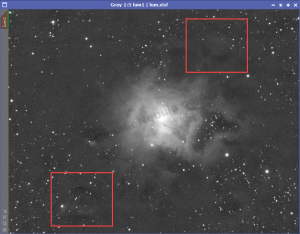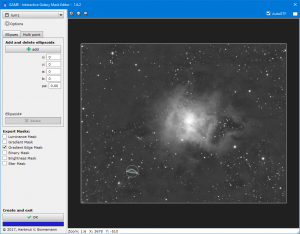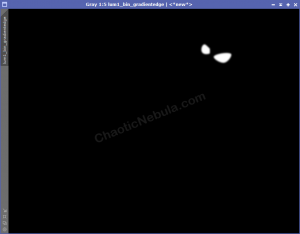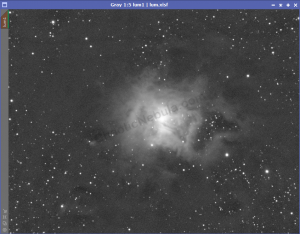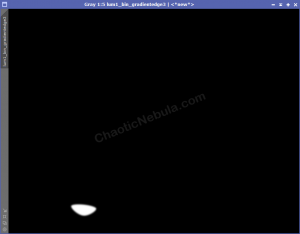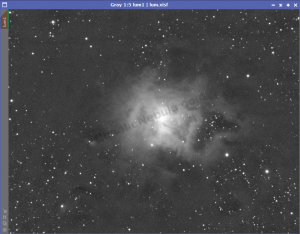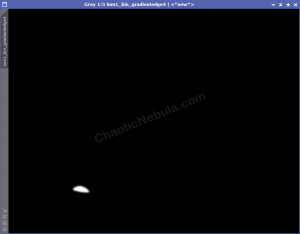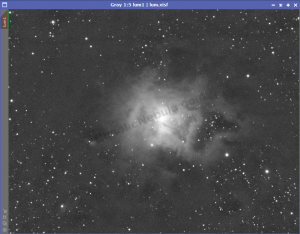Doing proper image calibration with Darks, Dark Flats and Flats goes a long way in helping to remove the traces of dust in the image. However, as the light changes throughout the night due to moon glow or light pollution, the image calibration process might not completely eradicate the dust, leaving behind donuts.
I’ve highlighted 2 areas in this image with residual dust donuts. They are actually caused by a tiny scratch in my telescope’s corrector plate. This one scratch also appears on two different locations because I imaged this object on both sides of the meridian, which caused the image to flip 180 degrees.
TIP: It is generally a good idea to try and reduce the dust donut impact early on in the processing workflow. Ideally, it should be done right after background extraction. If done early enough, subsequent processes will help reduce the sight of the residual even more until it is non-existent.
The following demonstrates ways to eliminate (or reduce) the impact on the final image.
GAME Script
The GAME Script, created by Herbert Walter, allows you to create custom masks by interacting with the image to define points for the mask. PixInsight includes a script called Dark Structure Enhance (Scripts – Utilities – Dark Structure Enhance).
The script allows you to create ellipses or custom shapes. Typically, the issues with my images are not perfect ellipses, so I’m often using multi-point.
We will also want to export Gradient Edge Masks to help us lighten/darken specific areas as you will see. Once the mask gets created, apply it and use Histogram Transformation to gently move the middle slider to the left or right to darken or lighten the area.
I will do an iterative process to try and remove the donuts.
If we compare the before and after, you can see how the donut almost disappears. It now appears like random noise in the image, which will get smoothed out with our standard PixInsight Workflows.


